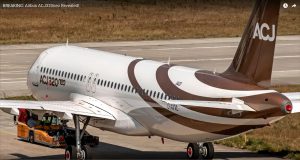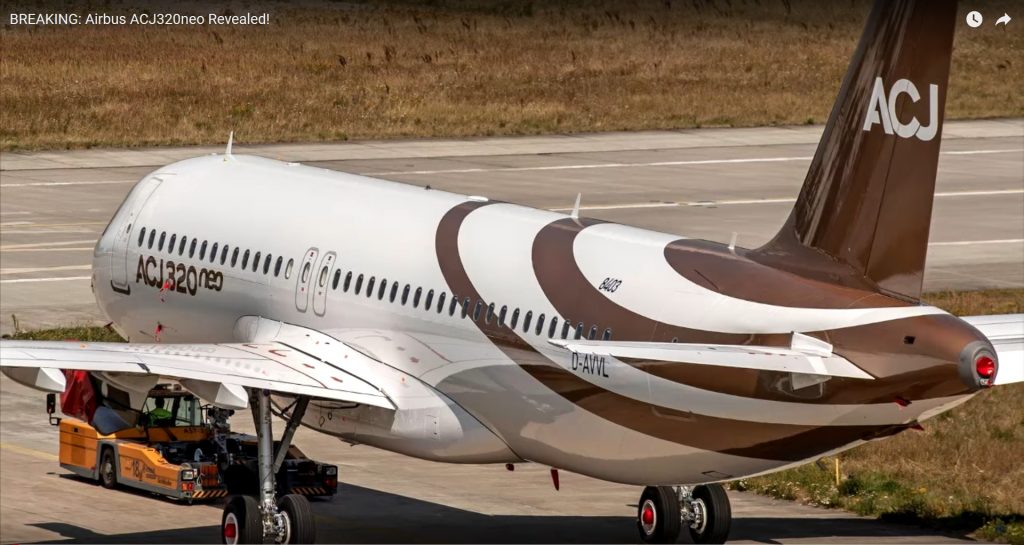 Airbus ACJ320neo Aerospace Private Jet Aircraft Review is Elevating comfort to new heights and flying passengers to new horizons, by taking advantage of the most modern technology, these spacious corporate jets offer customers the ability to take their luxurious lifestyles with them wherever they go while travel in Riding on a private jet is considered by some to be the ultimate luxury in travel. However, there is real value in riding in one, should you actually afford it. While there are all kinds of planes used for private jet fleets, Airbus is considered as one of the best airplane brands in the business.
Airbus ACJ320neo Aerospace Private Jet Aircraft Review is Elevating comfort to new heights and flying passengers to new horizons, by taking advantage of the most modern technology, these spacious corporate jets offer customers the ability to take their luxurious lifestyles with them wherever they go while travel in Riding on a private jet is considered by some to be the ultimate luxury in travel. However, there is real value in riding in one, should you actually afford it. While there are all kinds of planes used for private jet fleets, Airbus is considered as one of the best airplane brands in the business.
Airbus, a company that has made its name for innovations in aerospace technology, is bringing out its latest generation of planes specifically designed for corporate and private jet use. Included in this new generation of planes is the Airbus ACJ320neo. This review will take a closer look at this new model and how it represents the future of private jets.
Airbus ACJ Overview
Airbus has been working on their next generation of jets since 2016. Included in these updates is their highly popular Airbus Commercial Jet (ACJ) line. Their ACJ line is very popular with those who purchase their own jets and with fleets that carry private jet rental services. While the ACJ has proven to be very successful with its combination of features, performance, and efficiency, Airbus still knows that there is still room for improvement. This has resulted to the release of the ACJneo, the next generation of Airbus commercial jets, in January 2016.
The Airbus ACJ320neo is the product of Airbus’s neo program. Neo is actually an acronym that stands for “new engine option”. Airbus developed new engine options for their commercial planes such as the A320. These new engines have lofty performance goals: a 15 to 20 percent improvement in fuel efficiency, reduced noise, and lower emissions. With these promises, orders for the “neo planes” were huge—5200 units, to be exact. To put this into perspective, Airbus has sold around 7500 narrow-body aircraft since 1988. Given the magnitude of sales, the neo represents the future of Airbus. It has to live up to the hype as it’s now the primary money maker for the company.
In the development of the ACJneo, Airbus looked for ways to make their planes more efficient than ever before. The primary metric the company used is the “per passenger seat mile” cost. It is considered as a measure of the cost-effectiveness of operating the plane. The lower this cost is, the how efficient the plane is. To get the lowest per passenger seat mile cost, Airbus made all kinds of improvements in the engineering of the ACJneo. While Airbus has put an emphasis on efficiency, they did so without sacrificing comfort, performance, and other desirable features for jets. These areas of improvement will be put into focus later.
Given its important position in the Airbus product line, the ACJ320neo has to live up to the hype and more. The good thing is that while taking a closer look, this plane is everything it was advertised…and then some more.
ACJ20neo Capacity
The overall capacity of an aircraft can be divided into multiple metrics. This measurement is basically dependent on the internal configuration of an individual plane. Baggage capacity can be divided into 2 parameters: internal baggage capacity, which is the amount of baggage that can be stowed inside the pressure/temperature controlled compartment of the aircraft, and the external baggage capacity, which is the amount of baggage that can be accessed from the outside of the aircraft.
Even though the Airbus ACJ320neo has no external baggage capacity, it makes up for it with its massive internal baggage capacity. The internal baggage capacity of the ACJ320neo is measured at a staggering 976 cubic liters, making it easily the best in its class in this category. The overall seating capacity of this plane is entirely dependent on the type of interior configurations the owner wants, but its stock configuration can provide comfortable seating for 19 people, which is more than enough for most purposes.
Payload
To measure a plane’s payload, you have to use multiple measurements related to the plane’s weight, the number of items it can carry, and the like. The operational weight of an aircraft is the weight of the aircraft including the operational crew, necessary fluids such as fuel, and all operator equipment required for flight. The maximum takeoff and landing weight are defined as the maximum total weight of a fully packed aircraft where takeoff and landing can be performed safely. Useful weight is defined as the amount of weight that the plane can carry after the weight of the pilot, crew, and fuel is removed.
In terms of these payload features, the enhancements on the Airbus ACJ320neo also work very well in its favor. Maximum landing weight is measured at 148,592 pounds, and maximum takeoff weight is measured at 174,165 pounds, which is higher than most of the planes in its class. The operational weight of this plane is measured at 104,453 pounds. Lastly, the useful payload of this plane is measured at 8,900 pounds, which may not sound much, but is significantly higher than the competition. In terms of payload numbers, the ACJ320neo shines.
Speed
Speed is dependent on a wide range of variables. This value is dependent on internal features such as engine power and aerodynamic efficiency, while outside factors such as air thickness and headwind/tailwind strength also play a role. For the Airbus ACJ320neo, the figures point to an aircraft that is more than capable of speedy flight. Its maximum cruise speed is measured at 527 mph, its average cruise speed is measured at 527 mph, and its long range cruise speed is measured at 514 mph. All these figures represent modest improvements compared to similar planes in its class.
Range
The range of a plane is the measurement of how far a plane can travel using a full tank of fuel. Given that one factor that Airbus focused on during the development of the Neo program is fuel efficiency, you can expect this plane to shine in that department or at least show significant improvements relative to its competition. Apparently during testing, all these changes worked, resulting into range figures that will easily blow away the competition.
The measured maximum range of the Airbus ACJ320neo is measured at 7,099 miles, while the seats full range is measured at 7,021 miles. Maximum range is defined as the furthest an aircraft can fly at cruise speed at optimal altitude, while seats full range is defined as the maximum range an aircraft can fly at maximum payload. The respective measurements derived are significantly higher compared to similar jets, delivering on the promise that Neo jets will feature at least 20% better fuel efficiency compared to their competition.
Altitude
Altitude is another performance metric commonly used to determine an aircraft’s performance capabilities. The higher the altitude an aircraft can travel, the better its power is. At the same time, being able to travel at a higher altitude presents some performance and efficiency advantages. With thinner air present at higher altitudes, air resistance and drag becomes reduced, resulting to higher travel speeds and better fuel efficiency. Curiously, the ACJ320neo has a service ceiling of 41,000 feet, which is curiously lower compared to similar jets that have service altitudes of up to 45,000 feet.
Runway Length
Runway length is a set of measurements that determine the distance required for an aircraft to take off at full speed and make a full stop on landing. The landing distance of the ACJ320neo is measured at 4,665 feet, which means that it is the required length of field needed to land the aircraft at average weight. The balanced field length is measured at 5,820 feet, which is the distance required to send an aircraft at takeoff speed and then make a full stop. While there are multiple factors that can affect these runway length figures, it can be safely said that the ACJ320neo requires more runway length to take off and land safely.
Extra features
The Airbus ACJ320neo has a boatload of new features, taking advantage of tech improvements developed over years of aircraft experience. The ACJ320neo, as well as the other commercial jet models included in the neo program, comes standard with fly by wire controls, advanced avionics, and range-boosting features. It also comes with a 90-foot cabin that can be customized according to the owner’s needs and preferences. While the default 19-seat configuration is both comfy and luxurious, Airbus has a myriad of options that will help customize jets according to the owner’s personal preferences.
Conclusion
The Airbus ACJ320neo Aviation, while far from being a perfect jet, represents the future of commercial aircraft. With its significant improvements and cutting edge design, it delivers performance and efficiency figures that makes it stand out for the rest. It is faster, more fuel efficient, and more capable of carrying heavier loads than its contemporaries. These improvements totally make sense not just for private jet owners, but also for those interested in rentals. Same luxury, better performance, and lower costs: what more can a renter want on a private jet rental? Airbus has done it again.

